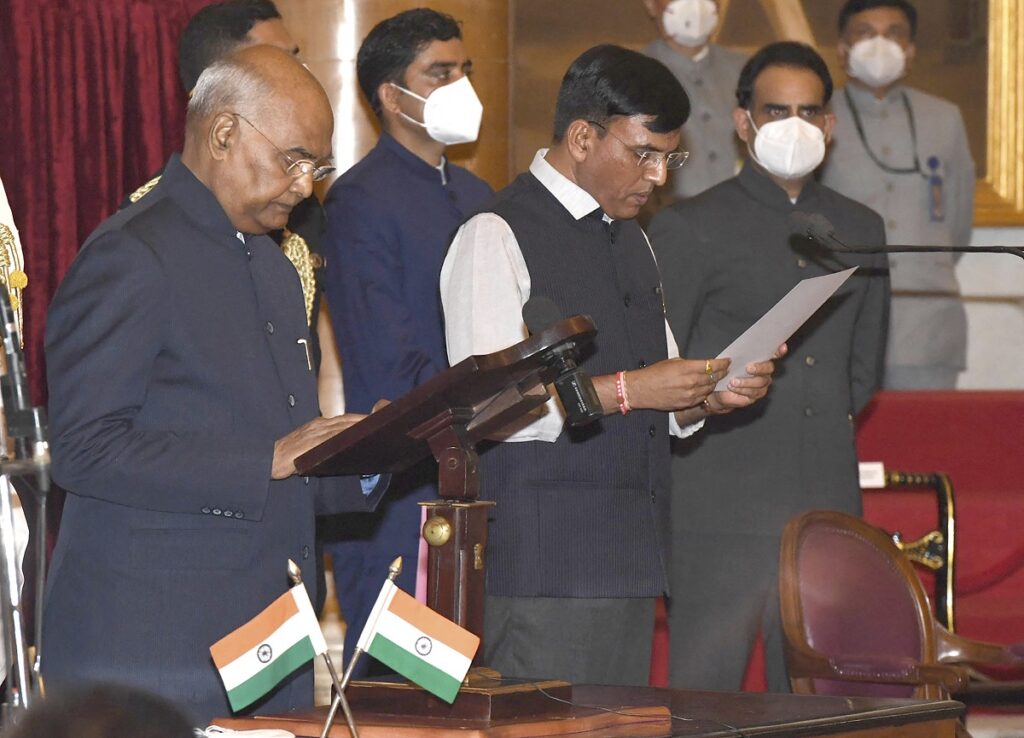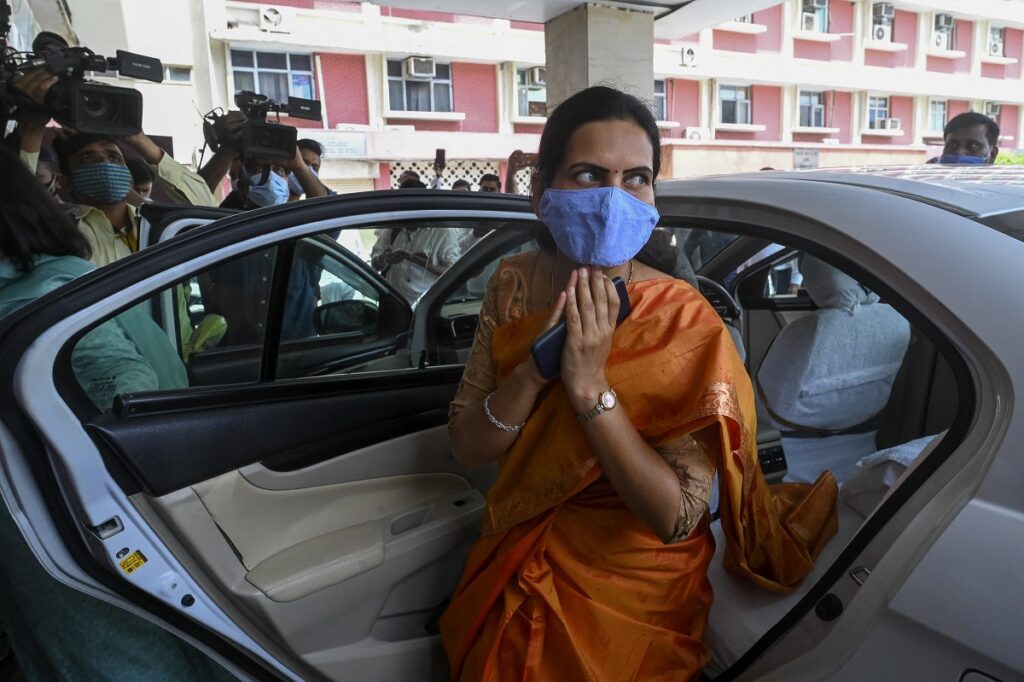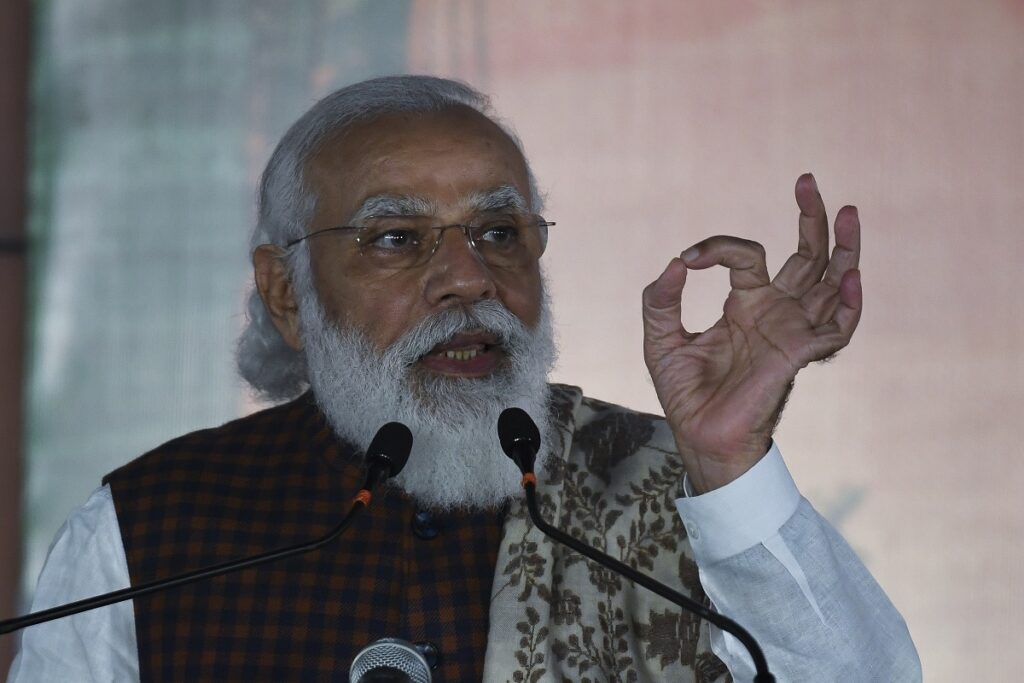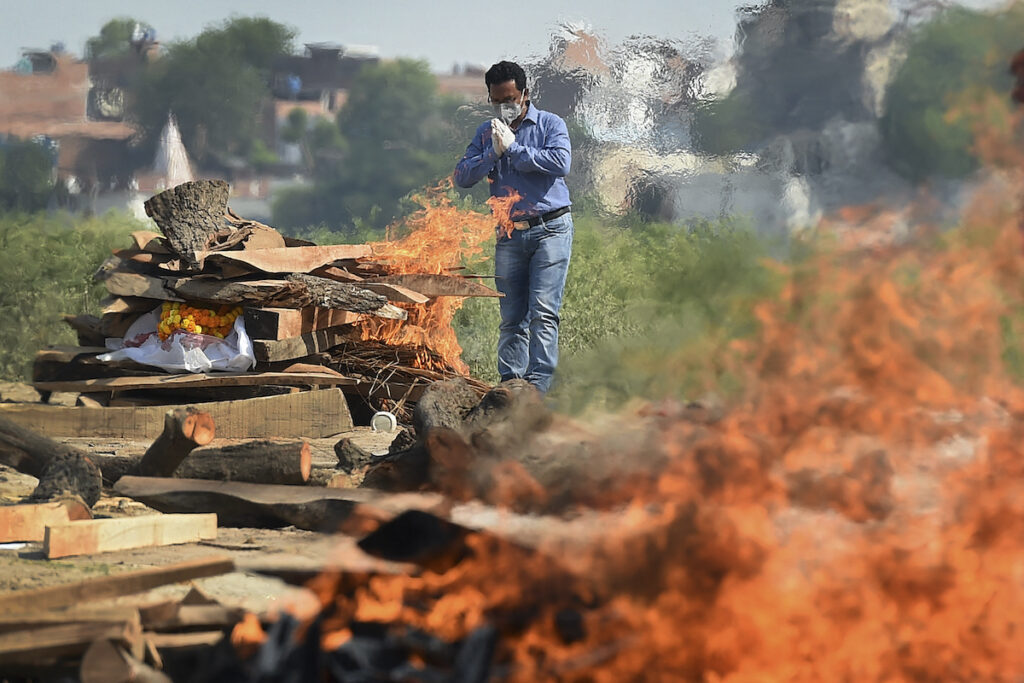
JAIPUR – Indian Prime Minister Narendra Modi fired key Cabinet ministers on Wednesday in a major revamp aimed at restoring his sinking popularity, but analysts fear his concentration of decision-making in his own hands will lead to failure.
Modi dismissed 12 ministers including ministers of health, information and broadcasting, and information technology amid anger at his government’s allegedly mishandling of the second Covid wave.
He brought 43 new faces into his expanded Cabinet, which now has 78 ministers including Modi.
But many doubt these changes will restore Modi’s image. They say that under Modi’s regime things are highly centralized and most power has always been in the hands of the Prime Minister and his colleague and close confidante Amit Shah.
Critics say Modi makes the big decisions and so is largely to blame for problems during the Covid crisis. Both Modi and Shah come from India’s western state of Gujarat.
Significant casualties of the reshuffle include Dr Harsh Vardhan who was health minister and his deputy Ashwini Chaube. Vardhan was directly responsible for monitoring and curbing the spread of the virus.
By firing them, Modi has tried to lay the blame on them for failing to manage the pandemic. They are accused of failing to predict and control its spread.
India faced one of its worst health crises during the second wave, which started in April and lasted until June.

Shortages of beds and oxygen in hospitals shattered India’s image globally and Modi’s image took a severe beating locally and internationally.
He had been riding high in the polls with near-80% approval before a series of shocks sent it tumbling. US data tracking company Morning Consult said his support dropped to 63%.
Indian pollster CVOTER said those “very satisfied” with the prime minister’s performance had fallen to 37% from 65% a year earlier.
His image was hit by media images of people crying outside hospitals as they tried to find oxygen cylinders or beds.
Pictures and videos of bodies “suspected” of dying due to Covid floating on the holy river Ganges and emotional images of bereaved relatives did further damage.
The ill-equipped health infrastructure and the country’s inability to handle the crisis came as a shock to many and were compounded by the country’s failure to provide vaccinations on time for its people.
So, was Harsh Vardhan responsible for the mismanagement?
Yes, on the face of it. It was his job to handle the pandemic in a proper manner. But should he alone be penalized? No.
Responsibility also lies with the Prime Minister. The ministers seem to have been made scapegoats.

P Chidambaram, a senior Congress leader and former finance minister tweeted, “The resignations of the Union Health Minister and the Minister of State Health is a candid confession that the Modi government has utterly failed in managing the pandemic.”
The question arises whether the PM, along with leaders of opposition parties should be held responsible for holding election rallies for a month from March 27 in five states where 187 million people were eligible to vote.
In most of these rallies, which at times were attended by thousands, leaders spoke without masks to maskless crowds who didn’t practice social distancing.
Senior BJP leader Prakash Javdekar, who was handling the Information and Broadcasting Ministry and was government spokesperson, was also dropped. It is believed that he was not able to project Modi government policies and its image in a “proper” manner.
In another tweet, Chidambaram said, “There is a lesson for ministers in these resignations. If things go right the credit will go to the PM, if things go wrong the minister will be the fall guy. That is the price a minister pays for implicit obedience and unquestioning subservience.”
Whether this Cabinet rejig will help Modi to improve his image or will the country see better governance now are key questions.
“Modi’s big Cabinet reshuffle, which largely focused on middle-ranking and junior ministerial positions, has turned out to be something of a damp squib,” Brahma Chellaney, an eminent strategic thinker, author and commentator tweeted.

“It’s clear Modi’s remaining term of nearly three years will look a lot like the seven years that he has been in office”, he said.
Political analysts say it will not be easy to wipe memories of the tragedies during the second Covid wave.
As of July 7, official figures show more than 30 million people have been found positive in total. More than 29 million have recovered and more than 400,000 are reported to have died. Voluntary organizations working in the health sector believe these figures are far short of the true numbers, which are hard to determine.
Modi’s image has also taken a severe beating on the economy. Unemployment and inflation are big issues. His biggest challenge is to handle the pandemic while creating jobs.
Political pundits say the reshuffle and expansion of the government have been with elections next year in seven states in mind, including Uttar Pradesh, Uttrakhand, Punjab and Goa.
Uttar Pradesh which gives 80 parliamentary seats and 403 assembly seats is the most important for any party in India. The lower house or Lok Sabha has 543 seats and Uttar Pradesh (UP) has an almost 15% share in Lok Sabha.
Winning in UP state assembly polls due in March/April is a must for the BJP as it will set a trend for the Lok Sabha polls in 2024.
So UP has been given a big representation in the new Modi Cabinet.
How important UP is for the BJP can be seen from the fact that seven new ministers from the state have been inducted into Modi’s Cabinet. This brings the number of ministers from UP in Modi’s cabinet 17 including Modi who contests Lok Sabha polls from Varanasi city in UP.
Post Disclaimer
Disclaimer: Ministers take the fall for Modi’s sagging image By ANIL SHARMA - Views expressed by writers in this section are their own and do not necessarily reflect Latheefarook.com point-of-view